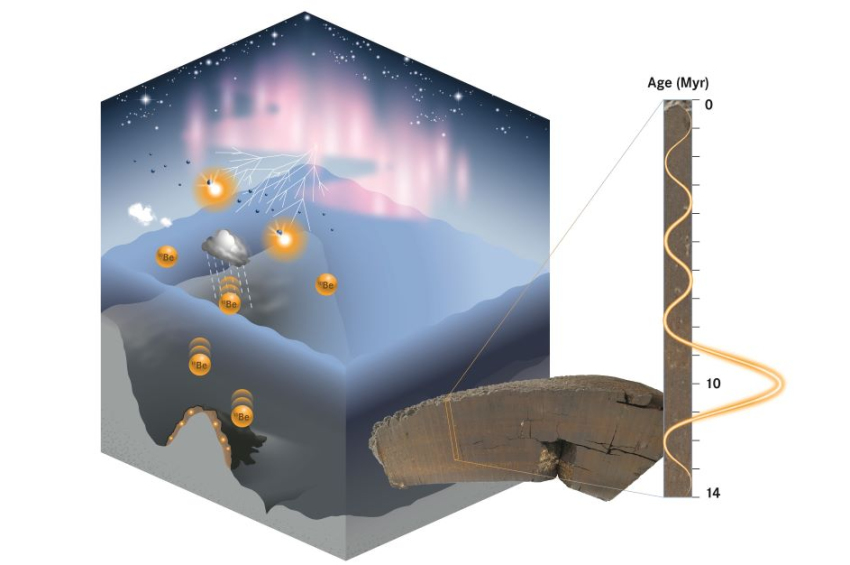Scientists uncover mysterious radioactive concentration beneath Pacific Ocean
A team of researchers studying nuclear physics and accelerator applications has detected an unexpected accumulation of the radioactive isotope beryllium-10 deep beneath the Pacific Ocean’s surface.
As detailed in a study published in Nature Communications, scientists believe this anomaly may date back approximately ten million years, possibly due to shifts in ocean currents or cosmic rays interacting with Earth's atmosphere.
More to read:
Jules Verne was right: Oceans are hidden beneath Earth
Beryllium-10 is continuously produced when high-energy protons, traveling nearly at the speed of light, collide with oxygen and nitrogen atoms in the upper atmosphere. The discovery could provide a valuable independent time marker for marine archives, helping scientists refine their understanding of Earth's geological history and improve the accuracy of geological data.
Radioactive isotopes are commonly used to date archaeological and geological samples. However, radiocarbon dating is limited to about 50,000 years. To analyze older samples, researchers turn to longer-lived isotopes like beryllium-10, which has a half-life of 1.4 million years and eventually decays into boron.
More to read:
Africa is splitting to form a new ocean
This allows scientists to peer back more than ten million years into Earth's history.
In their study, physicist Dominik Koll from Helmholtz-Zentrum Dresden-Rossendorf and his colleagues analyzed sediment samples from the ocean floor using accelerator mass spectrometry to measure boron isotope ratios. The results were surprising.
"At around 10 million years, we found almost twice as much boron-10 isotope as we had anticipated. We had stumbled upon a previously undiscovered anomaly," Koll noted in a statement.
While the team can only speculate about the cause of this anomaly, their findings coincide with a key moment in evolutionary history—the genetic split between gibbons, orangutans, and early human ancestors.
More to read:
Scientists discover life beneath the ocean floor
One possible explanation is a dramatic shift in ocean currents, which may have deposited an unusually high amount of beryllium-10 in the Pacific. However, an even more intriguing theory suggests an astrophysical event—such as a near-Earth supernova—that could have temporarily intensified cosmic radiation levels. Another possibility is that Earth encountered an interstellar cloud, making the atmosphere more susceptible to cosmic ray bombardment.
To uncover the truth, researchers plan to analyze additional samples and encourage other scientific groups to do the same. If similar anomalies are found in other oceans, it could indicate a global phenomenon—strengthening the case for an astrophysical event as the cause.
***
NewsCafe is an independent outlet. Our sources of income amount to ads and subscriptions. You can support us via PayPal: office[at]rudeana.com or https://paypal.me/newscafeeu, or https://buymeacoffee.com/newscafe - any amount is welcome. You may also want to like or share our story, that would help us too.






